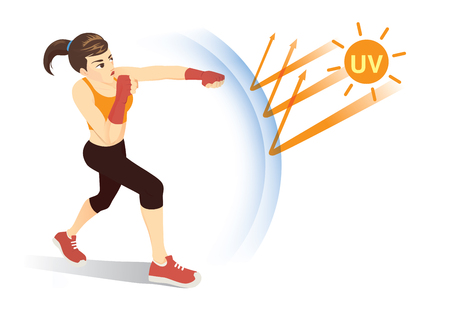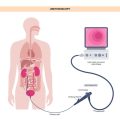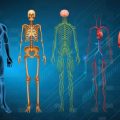1. Introduction to Gait Training in the UK
Gait training, which focuses on improving walking ability and mobility, is a vital component of rehabilitation within the UK’s healthcare system. It plays an essential role in helping individuals recover from conditions such as stroke, neurological disorders, musculoskeletal injuries, and post-surgical procedures. Within the National Health Service (NHS), gait training forms part of a multidisciplinary approach that aims to enhance patient independence, promote community reintegration, and ultimately improve quality of life. Given the diverse population across England, Scotland, Wales, and Northern Ireland, gait training services are tailored to meet the unique needs of patients from various backgrounds. The significance of effective gait rehabilitation extends beyond individual wellbeing; it also has broader implications for public health, reducing long-term care costs and easing the burden on NHS resources. As such, innovations and technological advancements in this area are increasingly recognised as crucial for ensuring equitable, efficient, and high-quality care throughout the UK.
Emerging Technologies in Gait Assessment and Rehabilitation
The United Kingdom has established itself as a leader in adopting innovative technologies for gait assessment and rehabilitation. In recent years, clinicians and researchers across the NHS and private sectors have embraced a range of state-of-the-art tools that are transforming patient care. This section will discuss three major categories: wearable devices, motion capture systems, and virtual reality platforms, all of which play a vital role in modern gait training programmes.
Wearable Devices
Wearable technology has become increasingly prevalent within UK rehabilitation settings. Devices such as inertial measurement units (IMUs), smart insoles, and activity trackers provide real-time feedback on gait parameters. These wearables empower both clinicians and patients to monitor progress outside traditional clinical environments, supporting home-based rehabilitation and remote monitoring—an approach particularly valuable for rural or mobility-limited populations.
Key Features of Wearable Devices Used in the UK
| Device Type | Main Functionality | Common UK Applications |
|---|---|---|
| IMUs (e.g., Gait Up) | Track limb acceleration, stride length, cadence | Post-stroke rehabilitation, fall risk assessment |
| Smart Insoles (e.g., Moticon) | Measure plantar pressure distribution | Diabetic foot care, orthopaedic recovery |
| Activity Trackers (e.g., Fitbit, Garmin) | Monitor daily step count, activity levels | Lifestyle interventions, long-term monitoring |
Motion Capture Systems
Advanced motion capture systems are widely used in leading UK research hospitals and specialist centres. These systems utilise high-speed cameras and reflective markers to analyse detailed movement patterns. The resulting data support precise diagnosis of gait abnormalities and guide bespoke intervention plans. With the integration of machine learning algorithms, British clinics are now able to predict outcomes and personalise therapy like never before.
Main Benefits of Motion Capture in UK Practice
- Objective Data Collection: Reduces subjectivity in clinical assessment
- Bespoke Treatment Planning: Enables tailored interventions for each patient’s needs
- Enhanced Research Capabilities: Supports evidence-based practice across the UK healthcare system
Virtual Reality (VR) Platforms
The adoption of virtual reality in gait training is on the rise within the NHS and private rehabilitation providers throughout Britain. VR platforms create immersive environments that simulate real-life scenarios, motivating patients to engage more actively in their therapy. Studies conducted at UK universities have shown that VR-based gait training can improve balance, coordination, and confidence among individuals with neurological conditions.
Notable VR Applications in the UK:
- Neuro-rehabilitation: Stroke survivors relearning safe walking strategies in simulated environments
- Elderly Care: Fall prevention exercises using gamified VR tasks to enhance engagement among older adults
- Pediatric Rehabilitation: Fun, interactive scenarios that encourage children with developmental challenges to practice walking skills safely
Together, these emerging technologies represent a transformative shift in how gait is assessed and rehabilitated across the UK. By combining cutting-edge tools with patient-centred care models, British clinicians are setting new standards for outcomes-driven rehabilitation.
![]()
3. Innovative Approaches in Clinical Practice
Across the UK, clinicians are at the forefront of integrating cutting-edge technology into gait training, both within NHS hospitals and community rehabilitation settings. These innovative approaches are transforming traditional methods, making rehabilitation more engaging, personalised, and effective for patients. In hospital environments, physiotherapists now commonly utilise wearable sensors to monitor patient movement with precision. These devices provide real-time feedback on gait patterns, allowing therapists to tailor interventions more accurately and track progress objectively.
In community settings, mobile applications and tele-rehabilitation platforms have become increasingly popular, especially for patients who may find frequent hospital visits challenging. These digital solutions enable remote monitoring, guidance, and encouragement from clinicians, ensuring continuity of care beyond the clinical environment. Additionally, the use of exoskeletons and robotic-assisted gait training is expanding in specialist centres across the UK, offering new hope to individuals with complex neurological or orthopaedic conditions.
Collaboration between multidisciplinary teams is also a hallmark of UK practice. Occupational therapists, physiotherapists, and technology specialists work together to implement these innovations in a way that is sensitive to each patient’s unique needs and goals. By combining advanced technologies with a holistic, patient-centred approach, UK clinicians are setting new standards in gait rehabilitation—enhancing outcomes and supporting patients on their journey towards improved mobility and independence.
4. Patient Experience and Engagement
Technological advancements in gait training are reshaping the patient experience within the UK’s healthcare system. By introducing digital solutions, clinicians are now able to foster higher levels of motivation, active participation, and overall satisfaction among patients undergoing rehabilitation for mobility challenges.
Motivation: A Key Driver in Gait Training Success
Maintaining motivation during rehabilitation is often a challenge for many patients. Modern innovations—such as virtual reality (VR) environments and interactive feedback systems—offer immersive experiences that make gait training more engaging. Patients are encouraged by real-time progress tracking and instant feedback, which can transform repetitive exercises into stimulating activities. This not only helps sustain enthusiasm throughout the recovery journey but also builds confidence as goals are achieved.
Participation: Enhancing Active Involvement
Technology-driven approaches have also increased patient participation rates in both NHS and private settings across the UK. Wearable sensors and tele-rehabilitation platforms allow for continuous monitoring and remote supervision, enabling individuals to take an active role in their own recovery. This flexibility empowers patients to practise prescribed movements at home, reducing barriers related to travel or clinic accessibility.
Satisfaction: Personalised Care and Measurable Outcomes
Patient satisfaction is closely linked to personalised care. Digital tools enable therapists to tailor programmes according to each individual’s abilities and preferences, supporting patient-centred care—a core value within the UK health system. Furthermore, clear reporting of progress through data-driven dashboards boosts patients’ sense of achievement and involvement.
Impact of Technology on Patient Experience
| Aspect | Traditional Gait Training | Technology-Enhanced Gait Training |
|---|---|---|
| Motivation | Often repetitive; may lead to disengagement | Interactive, gamified elements increase enthusiasm |
| Participation | Limited to in-person sessions; less flexible | Remote access; greater autonomy for patients |
| Satisfaction | Generic feedback; slower visible progress | Personalised plans with measurable outcomes; increased satisfaction |
A Patient-Centred Approach Moving Forward
The integration of innovative technologies in gait training aligns well with the NHS’s focus on personalised medicine and patient empowerment. By harnessing these tools, UK clinicians can ensure that each patient’s rehabilitation journey is not only effective but also positive, engaging, and tailored to their unique needs.
5. Research and Collaborative Initiatives
The United Kingdom is at the forefront of advancing gait training technology, thanks to a dynamic landscape of research projects and collaborative networks. Across leading universities and NHS trusts, multidisciplinary teams are working together to develop innovative solutions that address real-world mobility challenges faced by patients. For example, the University of Salford’s Centre for Health Sciences is renowned for its pioneering studies on wearable gait analysis devices, which are designed to support both clinical assessments and home-based rehabilitation. Likewise, Imperial College London continues to push boundaries in robotics-assisted gait training, with ongoing trials exploring how intelligent exoskeletons can enhance patient outcomes after stroke or injury.
Collaboration lies at the heart of these advancements. National initiatives such as the UKRI-funded REWIRE project bring together engineers, clinicians, and patient representatives from across the country to co-design next-generation assistive technologies. The partnership between NHS Digital and several tech start-ups has also accelerated the adoption of digital platforms for remote gait monitoring, enabling more personalised care and timely interventions.
Furthermore, organisations like the Chartered Society of Physiotherapy and the Association of British Neurologists actively foster knowledge exchange through conferences, workshops, and shared databases. These efforts not only promote best practices but also ensure that new technologies are rigorously evaluated in real-world settings before wider implementation.
Through this strong culture of collaboration and research excellence, the UK remains committed to placing patients at the centre of innovation—ensuring that gait training technologies are accessible, effective, and tailored to individual needs.
6. Challenges, Considerations, and Future Directions
Despite the remarkable progress in gait training technology across the UK, several significant challenges remain that must be addressed to ensure these innovations reach their full potential. One of the most pressing barriers is the implementation of advanced systems within NHS settings, where budget constraints and varying levels of digital readiness can limit access to new technologies. While private clinics may adopt cutting-edge solutions more rapidly, widespread integration across public health services often requires comprehensive evidence, cost-effectiveness analysis, and staff training initiatives.
Accessibility is another crucial consideration. Rural areas and communities with limited healthcare resources may find it difficult to access specialised gait training devices or benefit from expert-led rehabilitation programmes. Bridging this gap requires both investment in tele-rehabilitation platforms and creative partnerships between NHS trusts, universities, and technology developers to ensure equitable access regardless of geographic location.
The user experience remains central to successful adoption. Technologies must be intuitive for both clinicians and patients, taking into account varying levels of digital literacy among older adults or those with neurological impairments. Continuous feedback from service users will be key to refining these tools so that they genuinely enhance patient motivation, independence, and outcomes.
Looking ahead, the future of gait technology in the UK is promising. Advances in artificial intelligence and wearable sensors are expected to make personalised rehabilitation more precise and adaptive than ever before. Integration with national electronic health records could enable seamless sharing of progress data between multidisciplinary teams, ensuring continuity of care. Furthermore, UK-based research collaborations are likely to drive innovation tailored specifically for British populations and healthcare systems.
For clinicians, patients, and policymakers alike, embracing an open dialogue about safety, privacy, and evidence-based practice will be essential as we move forward. With thoughtful planning and continued investment, the UK can lead the way in making advanced gait training accessible to all who need it—helping people walk further, recover faster, and live better lives.


